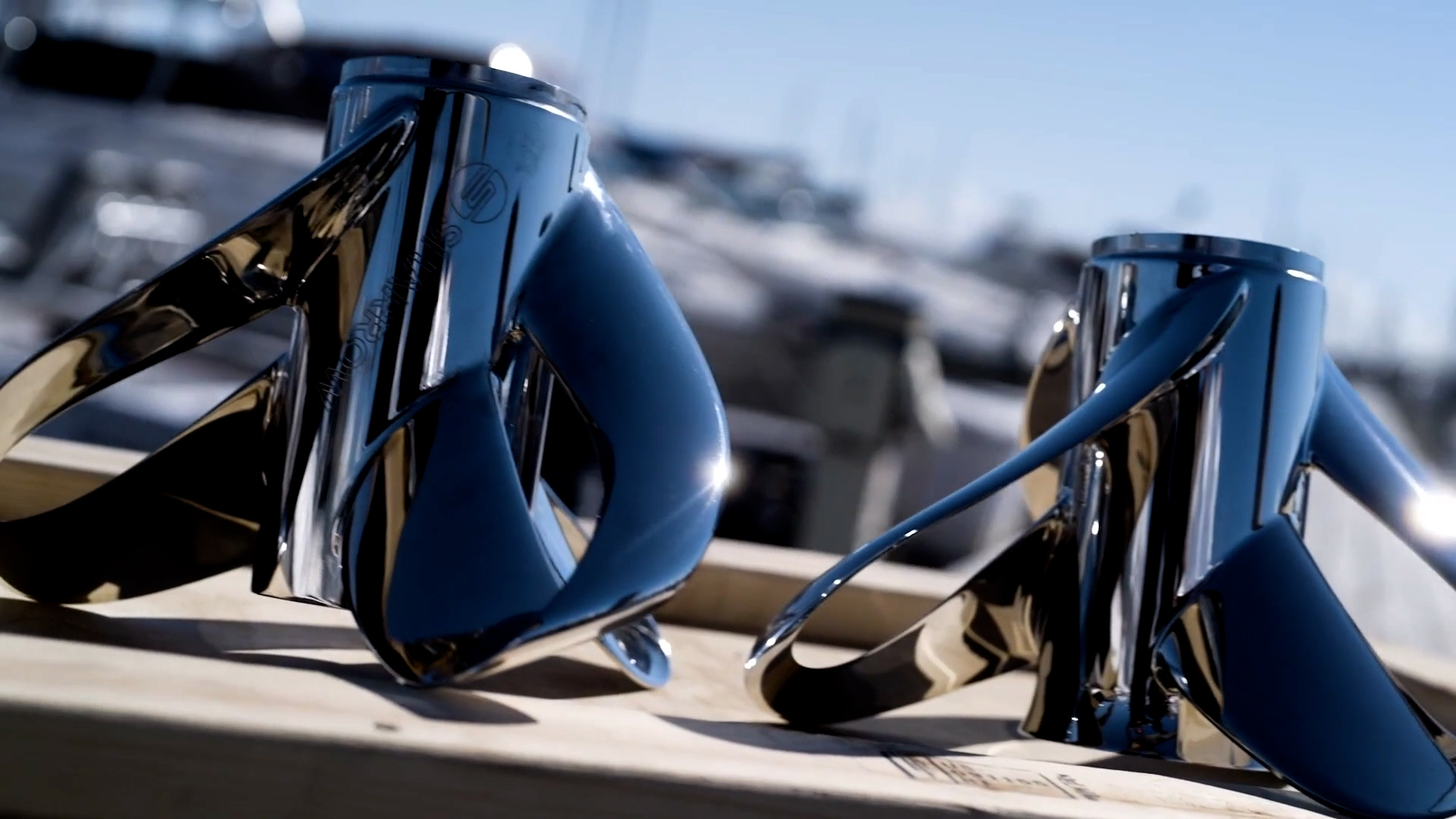
[RYAN ROBERTSON]
SPEND ENOUGH TIME LISTENING TO AMERICAN MILITARY LEADERSHIP TALK ABOUT THE EVOLVING NATURE OF COMBAT, AND CERTAIN THEMES BEGIN TO REPEAT. AS SITUATIONS IN UKRAINE, THE RED SEA, GAZA AND TAIWAN CONTINUE TO EVOLVE, SO TOO DOES THE NEED FOR INNOVATION. PERHAPS NOWHERE MORE SO THAN ON THE OPEN WATERS AROUND THE WORLD.
[Gen. QB Brown Jr., Chairman of the Joint Chiefs of Staff }
“We cannot continue to do the same approach that we’ve had for the past 20 years, particularly in a fight against a more advanced threat, or a threat that actually has evolved to using very inexpensive capability, we got to be able to innovate and get capable into the hands of the warfighters much faster than we do today.”
[RYAN ROBERTSON]
THAT WAS GENERAL C-Q BROWN JUNIOR, CHAIRMAN OF THE JOINT CHIEFS OF STAFF, IN MAY, SPEAKING TO MEMBERS OF THE SPECIAL FORCES COMMUNITY. AND HE’S NOT ALONE IN HIS THINKING.
[Michael Weigand, Co-Founder & Chief Growth Officer, Shift5 }
“When we talk about innovation, I think the first place that all of our minds go is to technology, innovation, we all think about a new weapon system more up more boom, as I like to think about it. But there’s another type of innovation that’s often overlooked. And that is innovation in, in the business model”
[RYAN ROBERTSON]
AT SEA, AIR, SPACE 2024, MICHAEL WEIGAND, THE CHIEF GROWTH OFFICER FOR SHIFT-5, A D-O-D CONTRACTED DATA SECURITY FIRM, TOLD AUDIENCE MEMBERS INNOVATION CAN COME FROM NON-TRADITIONAL SOURCES.
[Michael Weigand, Co-Founder & Chief Growth Officer, Shift5 }
“An advantage that you know, new and emerging businesses have an industry is that they are not encumbered by decades of business process development. And this is always how we’ve done things. ”
[RYAN ROBERTSON]
ENTER SHARROW MARINE. MAKERS OF THE SHARROW PROPELLER. IF IT LOOKS A LITTLE RADICAL, THAT’S BECAUSE IT IS.
ACCORDING TO THE COMPANY’S NAMESAKE, GREG SHARROW, HIS PATENTED DESIGN IS THE FIRST SIGNIFICANT LEAP IN PROPELLER TECHNOLOGY SINCE THE 1830s.
[Greg Sharrow, CEO & Founder of Sharrow Marine}
“We tell people that it’s the propulsion revolution. And we’re transforming the boating experience for people.”
[RYAN ROBERTSON]
BUT SHARROW DIDN’T SET OUT TO START A REVOLUTION. ORIGINALLY HE WANTED TO CREATE AN ULTRA-QUIET DRONE FOR VIDEO PRODUCTION.
[Greg Sharrow, CEO & Founder of Sharrow Marine]
“So maybe think about the tip of the propeller, because that’s the noisiest part of the propeller because of the tip vortices, they flutter. And they make that that buzzing sound. And so I thought, well, if I want to use it for music, I can’t just make it smaller, I had to eliminate altogether. And that led me to ask the question, what would a tipless propeller look like? And how would it function? And I went to bed asking that question, I woke up asking that question. And the next day, while I was walking my dog, this idea just popped in my head. ”
[RYAN ROBERTSON]
THAT IDEA WAS TO ELIMINATE THE TRADITIONAL PROP BLADE, AND INSTEAD USE A LOOP. AFTER CONSIDERABLE RESEARCH AND DEVELOPMENT, SHARROW AND HIS TEAM STARTED PRODUCING AND TESTING THIS RADICAL DESIGN CHANGE.
A CHANGE THAT SHARROW SAYS IMPROVES THE RIDING EXPERIENCE, REDUCES NOISE, AND IS CONSIDERABLY MORE FUEL EFFICIENT.
IT’S THE KIND OF INNOVATION THEY’RE HOPING TO DELIVER TO THE MILITARY.
[RYAN ROBERTSON]
“For Special Operations community. Yeah, the quieter obviously itself here, right? Yeah, but there’s less vibration. So that also is going to be better on the sensors. Better on the operators onboard.”
[Greg Sharrow, CEO & Founder of Sharrow Marine]
“Yeah, right. Yeah, it’d be less vibration, which is better on the operators. And it’s going to reduce the debt detected in less vibration means you’re going to reduce the detectability of the vessel, which also has a huge benefit for the operators. And just the fatigue of listening to a really loud, you know, say motor, it’s not the motor propeller for extended amount of time, can really wear on you over time. And so by reducing that, there’s just a tremendous, you know, lifestyle benefits all operators. ”
[RYAN ROBERTSON]
IT’S A TECHNOLOGICAL LEAP THAT YOU CAN SEE IN TESTING CONDUCTED AT THE UNIVERSITY OF MICHIGAN. THE SHARROW PROP CHURNS THROUGH MORE WATER AND REDUCES, OR ELIMINATES, TIP VORTICES. IT ALL WORKS TOGETHER TO CREATE A DIFFERENCE YOU CAN HEAR ON THE OPEN WATER
[Greg Sharrow, CEO & Founder of Sharrow Marine]
“Even at low speeds, you can feel a difference in the attitude of the boat. You can feel a difference in the command that you have of the boat. You can feel that the boat is moving forward with more confidence. And it’s a quieter and sweeter, more enjoyable ride.”
[RYAN ROBERTSON]
AFTER A COUPLE TOURS ON IDENTICAL BOATS, ONE WITH A TRADITIONAL PROP, AND ONE WITH THE SHARROW PROP, IT WOULD SEEM TO BE THE KIND OF INNOVATION AMERICAN MILITARY LEADERSHIP SAYS THEY’RE LOOKING FOR. ON THAT FRONT, A SPOKESPERSON FOR SHARROW MARINE TELLS US THERE’S NOTHING THEY CAN PUBLICLY SHARE JUST YET.
WHEN THAT HAPPENS, WE’LL LET YOU KNOW.











